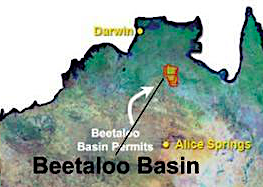Loading article…
Loading article…
20 July 2020
By ERWIN CHLANDA
Anyone looking for developed and costed projects to drag us out of the pandemic chaos will find the first report of the Government’s new Territory Economic Reconstruction Commission, as well as the Opposition’s “new blueprint” for tourism, very disappointing.
Gas a major focus for Mr Gunner’s new commission.

This raises the question what both of them have been up to in the past four years.
Most of the initiatives aren’t new, and neither are the numbers, but put together they paint a worrying picture.
With the substantial closure of the tourism industry, almost 20% of the Territory’s labour force is currently on JobSeeker, and about a third of businesses are accessing JobKeeper, says the commission.
“This crisis has come at a time when the economy, having undergone a transition from a major construction boom, was just showing signs of turning around before COVID-19 delayed private and public sector funded projects.
“While LNG exports have surged, the Territory’s economy had already shrunk 1.5% in 2018/19, from its peak of $26.5 billion in 2017/18. Further contraction is expected in coming months because of the crisis.”
The commission says the foundations that underpins the Territory’s growth over the past 20 years, from a $14 billion economy to a $26 billion economy, with a 25% increase in population and a 40% increase in the workforce, are still in place: “World-class mineral deposits, including critical minerals necessary for modern life, access to water, a strategic location for defence, a quality solar resource spread across a wide area, a strong agricultural sector” are mentioned.
The commission gives no clues how the Territory Government will fulfil “an ambition of creating a $40 billion economy by 2030.
“In the Commission’s opinion this is a significant ask and will require bold action against a program of work.”
Aboriginal Territorians own about 48% of the land and about 80% of the coastline, and hold native title over a significant proportion of the remainder: “Territory economic growth must involve Aboriginal Territorians,” says the report.
There are about 75,000 Aboriginal people living in the Territory, 80% in remote or very remote areas. Aboriginal Territorians represent 30.3% of the total population of the Territory.
The commission projects growth mainly for the Top End: Part of remote solar ($36m); road access to six of the significant attractions in Kakadu National Park ($95m); Central Arnhem Road ($420m); Darwin Waterfront expansion ($200m).
“Private sector led” development is tipped at mining ($1500m) and agribusiness ($400m).
“The Beetaloo sub-basin shows significant potential to provide gas and liquids for energy use and to underpin a petrochemical manufacturing industry” including “development of renewables driven manufacturing such as hydrogen, the production of ammonia, and minerals processing … initially using gas from offshore sources, then gas and liquids.”
The Territory and Australian governments should establish an Investment Delivery Taskforce which, over the next four weeks (“ready for the incoming government”), would identify options to accelerate project investment decisions in projects [so they can] start construction within the next 12 to 18 months.
Pre COVID-19 tourism comprised 4.2% of the Territory economy.
Bureaucrats should get a wriggle-on with licensing and approval timeframes.
Meanwhile Opposition Leader Lia Finocchiaro claims Mr Gunner’s commission is copying the CLP’s ideas but she doesn’t come up with much that’s original in her tourism plans which are short of how-to and dollars needed.
She says a CLP Government would “drive a sales led approach over marketing”; upgrade roads such as the Red Centre Way and the Arnhem Way; more flights; more WiFi hotspots; and “improve the marketability of the Stuart Highway and other roads, including a focus on military tourism”.
Green season marketing would encourage encouraging travellers to spend summer holidays here with our National Parks open; Indigenous tourism would be enhanced and the National Indigenous Art Gallery would be built at the Desert Park in Alice Springs “as a first priority”.